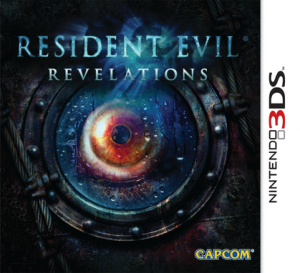Ubisoft Deliberately Gimped the PC Version of Watch Dogs
There has not been a whole lot about Ubisoft’s handling of the Watch Dogs hype machine that has not been completely full of shit. Ubisoft originally presented the game as a true “next gen” title, only to reveal months later that it was being developed for the PS3 and 360, they claimed that players would be able to perform upwards of a couple of hundred of unique hacks when the reality is that the number is closer to about ten, and Ubisoft initially showed off a game that was far prettier than any of the versions of Watch Dogs that shipped last month. Some people interpreted this last fact as meaning that Ubisoft developed a deliberately misleading slice of gameplay to create the illusion that their game had truly next generation graphics, while others [one’s self included] figured that the E3 2012 unveiling of the game was a representative glimpse of the game as it existed at the time, but that it was subsequently downgraded to suit the capabilities of the previous generation of consoles. Common to both of these theories is the belief that what we saw at E3 2012 would remain ever beyond the reach of the common man [or at least it would without the intervention of some god-tier modding], yet happily both of these notions are mistaken, as it was this week revealed that all of the Watch Dogs E3 settings remain in the PC version of the game.
One had never countenanced the possibility that the graphical prowess of the PC version of Watch Dogs had been deliberately sabotaged by Ubisoft, as the suggestion of that occurring sounded like a demented conspiracy theory, yet it would seem that outlandish conspiracy theories can on occasion be bang on the money. Examination of the game’s files has revealed that all of the PC version of Watch Dogs‘ E3 2012 graphical settings remain present and accounted for – they are just switched off by default, and there is no way to turn them on from within the game’s options menu. WHOOPS! A quickly released mod for the game not only manages to bring the game’s visual fidelity up to the ballpark standard of what was shown off in 2012, but it is also claimed to somewhat fix the game’s wildly fluctuating framerate, indicating that these advanced graphics options are vastly more optimised than their eventual low fidelity counterparts. Improvements include changes to fog density, bokeh depth of field when looking through cameras, framerate stabilisation, E3 2012 bloom lighting, headlight shadows, level of detail changes, reflection changes, denser higher quality rain, lensflare, lighting changes, and civilian density changes. For their part, Ubisoft have claimed that all of the high quality graphical cutbacks were done in service of improving the game’s presentation and gameplay, but no one seems to be in a hurry to drink that particular Kool-Aid:
“The dev team is completely dedicated to getting the most out of each platform, so the notion that we would actively downgrade quality is contrary to everything we’ve set out to achieve. We test and optimize our games for each platform on which they’re released, striving for the best possible quality. The PC version does indeed contain some old, unused render settings that were deactivated for a variety of reasons, including possible impacts on visual fidelity, stability, performance and overall gameplay quality.
Modders are usually creative and passionate players, and while we appreciate their enthusiasm, the mod in question (which uses those old settings) subjectively enhances the game’s visual fidelity in certain situations but also can have various negative impacts. Those could range from performance issues, to difficulty in reading the environment in order to appreciate the gameplay, to potentially making the game less enjoyable or even unstable.”
It is difficult to fathom what could possibly be classed as “subjective” about such a comprehensive visual upgrade as that offered by the E3 2012 mod; a view that has been expressed by both gamers and mainstream gaming press alike. It is also quite difficult to wrap one’s head around the claim that seemingly benign graphical effects such as car headlights which actually cast shadows could be regarded by Ubisoft as potentially game ruining features. They are likely trying to fool gamers into thinking that these effects were omitted in order to improve game performance, only we have already seen that installation of this graphical effects mod actually serves to improve the game’s framerate. In quandaries such as this the general rule of thumb is that the best explanation is the parsimonious one, and the parsimonious explanation in this instance is that Ubisoft deliberately hobbled the PC version of their game in order to enforce platform parity. Viewed in this light, the odd quirks of other Ubisoft titles quickly take on drastically different interpretations, such as the fact that the PS4 version of Assassin’s Creed 4 was the same resolution as the Xbox one version when it launched, and required a patch to bring it up to native 1080p. At any rate, it is clear that Ubisoft has broken faith with PC owners in a worse fashion than any other publisher in recent memory, because while PC ports tend to be borked through laziness, indifference, or budgetary constraints, Ubisoft on the other hand look to have fucked their game [and by extension their customers] through deliberate malicious intent – and that is a hard thing to forgive, much less forget.

Sony might fancy the prospect of charging customers infinite monies in order to play last gen games on their PS4s, but a product is only worth as much as the customer is willing to pay.
Playstation Now Prices Are Fucking Ridiculous!
Just how desperate does Sony believe PS4 owners to be for access to laggy last-gen content? About $1.25 per hour worth of desperate it would seem if their pricing for the Playstation Now service is any indication. To rent even reletively ancient titles for any decent period of time actually stands to be substantially more expensive than just buying the game disc outright. Ever since E3 2013 Sony have been on a roll, selling PS4s by the crateload with nary a PR fuck up to accompany them, yet now it would seem that they have chosen post-E3 2014 as their appointed time to begin fucking up with a vengeance, and fuck up they have with a mean pricing scheme that represents shockingly poor value for money.
To hire 2012’s Final Fantasy XIII-2 it will cost gamers a farcical five dollars for four hours, eight dollars for seven days, fifteen dollars for thirty days, and thirty dollars for ninety days. The situation is even more dire for players who wish to hire 2011’s Saints Row: The Third, as that game seemingly does away with the middle tier of pricing options, and only allows gamers to hire the game for four hours at five dollars, or for ninety days at thirty dollars. Things become marginally better, if only slightly, for gamers interested in hiring indy titles, as Guacamelee can be rented for four hours at three dollars, seven days at five dollars, thirty days at eight dollars, and ninety days for fifteen dollars.
As far as outrageous greed goes, this decision definitely puts Sony at the head of the pack. Irrespective of the service’s poor performance, which requires a direct connection into the back of one’s PS4 in order to not be a laggy mess, this still could have been a good little money earner for all parties involved, and it still might be if Sony re-examines the service’s pricing structure before the beta period ends. If the pricing structure remains the same then this will be just the latest Sony initiative to die on the vine.
Capcom Faces Prospect of Being Bought
Capcom has been on a downward slide for a while now. Capcom’s output has taken the form of ever more disappointing internally developed sequels [when not farming out their properties wholesale to the lowest bidder third party operations] – and Capcom’s sales figures and budgetary bottom-line reflect this new reality. In their bid to chase the success of Call of Duty, Capcom has managed to virtually ruin one of their more enduring brands: Resident Evil, the sixth installment of which saw a staff of over seven hundred working to create a massive glut of content, only to produce a mediocre mess of a game that sold around three million units less than the previous game in the series. Capcom’s flagging fortunes saw it nearly destitute with about $100,000,000 in the bank last year, until the release of Monster Hunter 4 held off the seeming inevitable – they have been living hand-to-mouth ever since.
This week Capcom shareholders displayed their lack of faith in the company by voting not to renew the company’s stock takeover defense mechanisms. Capcom had previously been operating under a directive that would have allowed the company to allocate extra stock to existing stakeholders in the event of a hostile takeover, so as to dilute the stock of any would-be interloper. With this week’s vote to strip Capcom of its takeover defense, the company is now ripe for a hostile takeover, and all the more so due to the effect that their less than stellar financial performance has had on their share price. As it stands this turn of events could be either good or bad. On the one hand a predatory entity could acquire Capcom and then gut them in order to sell their valuable IPs piecemeal, or Microsoft could even purchase Capcom and destroy them as they did Rare. On the other hand Capcom could find themselves acquired by a whiteknight suitor who could actually make effective use of their strong stable of IPs, like Sony or Nintendo. Nintendo would make for a particularly good fit, and would make for some absolutely sublime fanboy butthurt.
![[PICTURED]: a scene that shares only a tangential similarity to the game 'Watch Dogs'.](https://lusipurr.com/wp-content/uploads/2012/06/WatchDogsScreencap-300x160.jpg)
